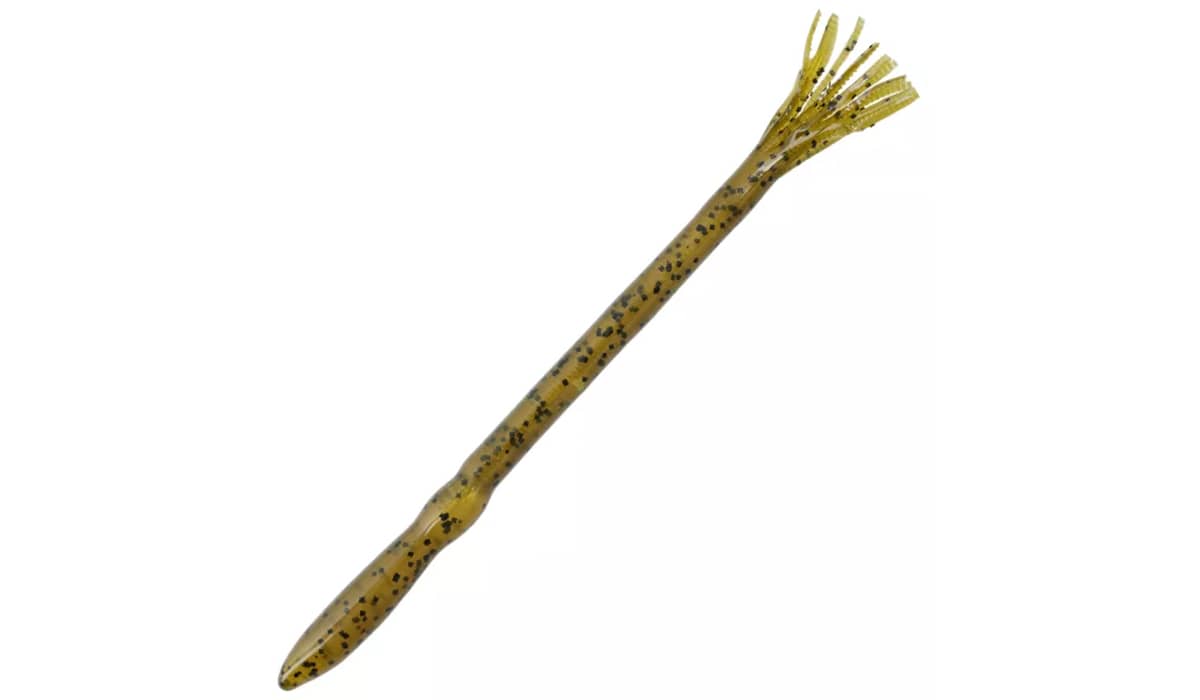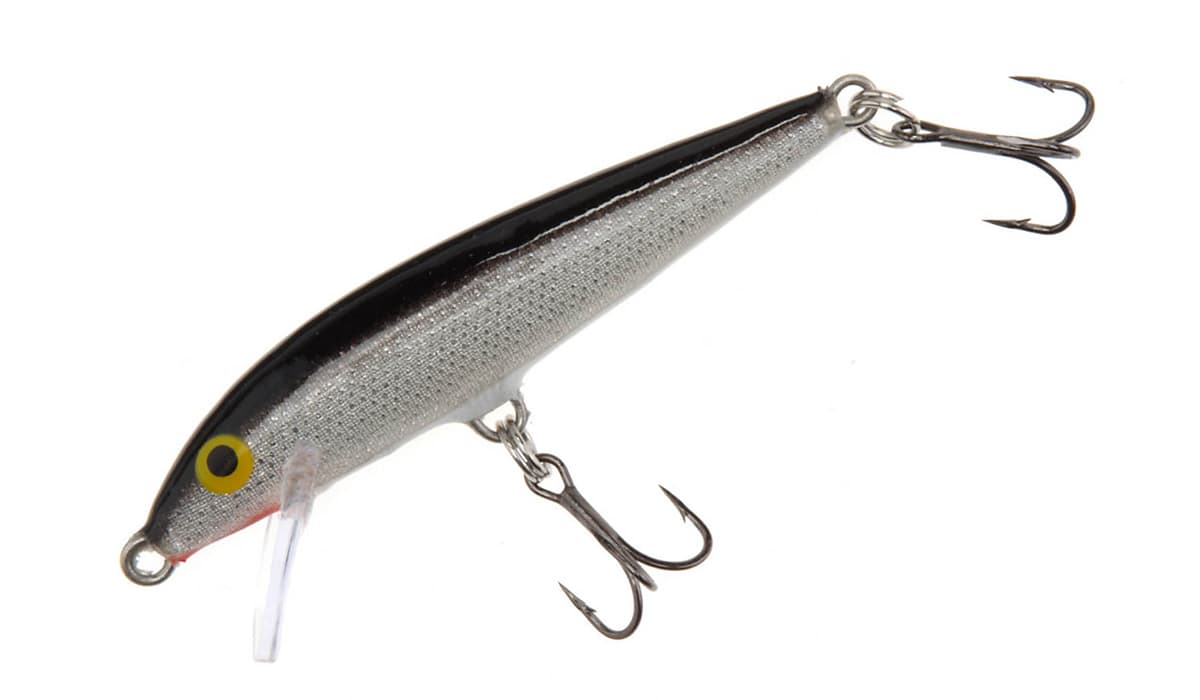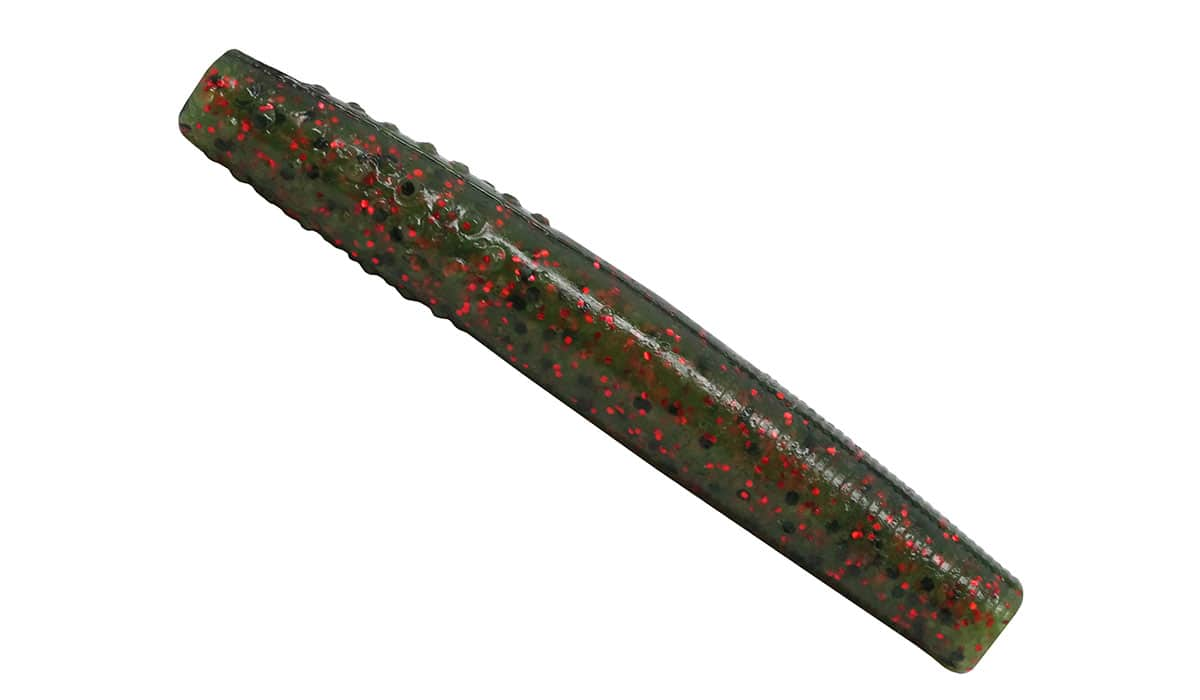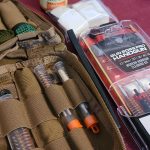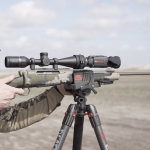The Best Lures to Catch Fish Now
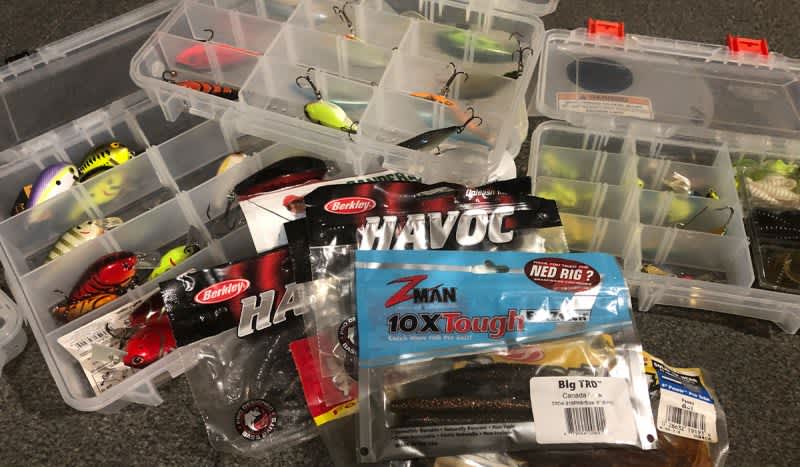
1. The Creme Lure Tube Worm – Editor’s Pick
I have a soft plastics bias. I grew up fishing soft plastics. I’ve caught a lot of fish using soft plastics. Rare is the day where you can’t catch at least a few fish if you give plastics a fair shot. The Tube Worm from Creme is just a genius design that does exactly what I want my plastics to do. The head segment of the lure is solid, while the back portion is hollow. This means it will hold air, and makes it stand on end when underwater. The frills at the very end dance while vertical, and as air escapes, they move even more. I typically use them on a shaky head style jig, but they work well on Texas or Carolina rigs as well. I’ve hopped them, shook them, deadsticked them, and drug them. Every way I’ve caught fish.
2. The Original Floating Rapala – Classic Pick
If you are asked to close your eyes and picture a crankbait, this is probably the one that first comes to mind. The fact that it’s still one of the most popular baits around the world, with its rich history, speaks to just how great a lure it is. You can twitch it on the surface, you can get down in the 3”-5” range, you can burn it, you can work it slow. For all-around use, I opt for the F07 size – 2.75” is big enough to appeal to trophy bass and walleye, but doesn’t discourage other opportunistic strikes either.
3. The Strike King Lil Mr. Money Spinnerbait – Flashy Pick
Bigger fish eat smaller fish. So, you’ll see a theme with most of this list, that we chose lures that mimic smaller fish. The spinnerbait is no different. The 3/16-ounce model from Strike King is a little smaller than most spinnerbaits you see on the tackle store shelves, but since our focus is just flat catching fish, downsizing isn’t a bad thing. You’ll elicit strikes from everything from aggressive crappie to wary musky with this little spinner. More than once I’ve hooked musky while throwing a finesse spinner for bass! The flash and thump of a spinnerbait, but in the understated size, is a perfect blend of fish-catching appeal.
4. Z-Man Finesse TRD – Finesse Pick
If you aren’t familiar with the Ned Rig, I’d recommend changing that now. The rig looks about as sexy as it sounds, but there are a lot of lures designed to catch anglers, instead of fish. The Ned Rig just does the latter. Why it works is a matter of debate, because to look at it, there isn’t a lot going on. Part of the magic comes from making sure you rig it properly. I recommend the 1/6-ounce Power Finess Shroomz Weedless jig head, also from Z-man. To me, it’s the perfect weight to fish deep when I need to, but not so heavy that it detracts from the action in shallower situations. When rigged properly the ElaZtech formulation of the bait makes it stand vertically, giving the profile of a baitfish feeding on the bottom. The key is not to fish this lure too fast. A few shakes, a hop, and let it sit. At 2.75” it will again appeal to multiple species.
5. The Strike King KVD 1.0 Squarebill Crankbait – Erratic Pick
Squarebill crankbaits aren’t really “new” but they have become far more popular in the last few years. Squarebill cranks are perfect for so called “power fishing” because you can cover a lot of water with them and find the most aggressive fish. Once again, we choose a size that appeals to a wide variety of species. I love working cranks like this in a crawfish pattern, especially in the spring and early summer. Why the erratic choice? The bill design ensures that the bait wanders and kicks in more random ways than other crankbaits. Not only that, when working around cover like timber or docks, the square bill makes the bait deflect off those items, very often eliciting a strike. You’ll be able to work the top 4”-5” of the water column, from the surface down, depending on how fast you fish it.
Picking the right line
While most of us grew up using monofilament line almost exclusively, you’ve got some other options, and most of them have come a long way in recent years. Like with most things, there are applications for all types of lines, with the main three being mono, braid, and fluorocarbon. Mono is the most affordable and will work well in most situations, but it does have a lot of stretch and isn’t the most sensitive option. It also has a lot of memory, so coils can cause an issue. Braid is more sensitive with almost no stretch or memory, but that can be a negative too, as aggressive hooksets can rip the bait away from the fish. Fluorocarbon is kind of a middle ground, but by far the most expensive. For me, I value the sensitivity or braid above all else. I typically use a braid mainline and fluorocarbon leader, connected with a double-uni knot. I have a couple rods setup with different options, but that’s my go to setup. It works with every lure and technique in the story.
And the right knot...
Just like picking the right type of line, there are options here, and some of it has to do with what kind of line you are using. My recommendation is to learn three knots, and you’ll have almost everything you could ever need covered. The improved clinch, palomar, and the surgeon’s loop. My go-to is the palomar, but the others have their place as well. But if you can tie those, you’re in good shape.
The importance of re-tying
Every so often it’s important to retie your lure onto the line, especially if you are landing fish. Fighting fish, especially when caught around cover, puts a lot of wear and tear on your line. If you fight fish all day and don’t retie, you may just end up losing a fish and a productive lure when it breaks off because the fish or structure you caught them around damaged the line enough for it to break.
Why am I not catching fish?
When fishing with artificial lures, it is best to have multiple options to choose from, so you can find what works. One big factor to artificial lures not working is scent. Make sure your hands are clean when tying on.
Do I need bait with a lure?
Not usually, because the lure imitates the food source. Sometimes, however, adding bait suck as a worm or minnow, increases your luck depending on the fish.
We are committed to finding, researching, and recommending the best products. We earn commissions from purchases you make using the retail links in our product reviews. Learn more about how this works.

